Wireworms are the larvae of click beetles. These wireworm larvae reside in soil and munch on potatoes, beets, carrots, and onions. In addition, they actively feed on plant roots, especially grasses such as corn and make long tunnels in the ground.
Wireworm populations are the worst enemies of corn farmers. They feed off the roots of young corn seedlings and corn kernels. Wireworms completely eat the germ of corn kernels and leave behind only the seed coat.
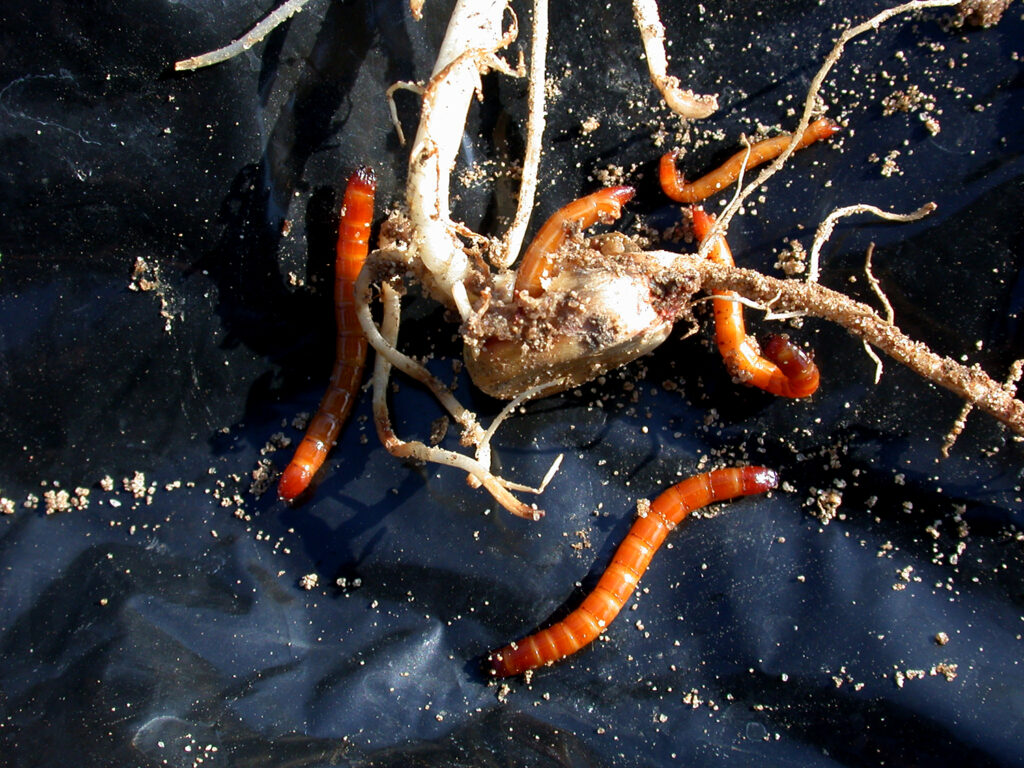
It is, therefore, essential to learning wireworm control with proven organic and chemical methods to prevent the damage of vegetables and grains. The timely learning of wireworm control will act as the first line of defense.
Let’s find out more about wireworms and how to get rid of them effectively?
What Are Wireworms?
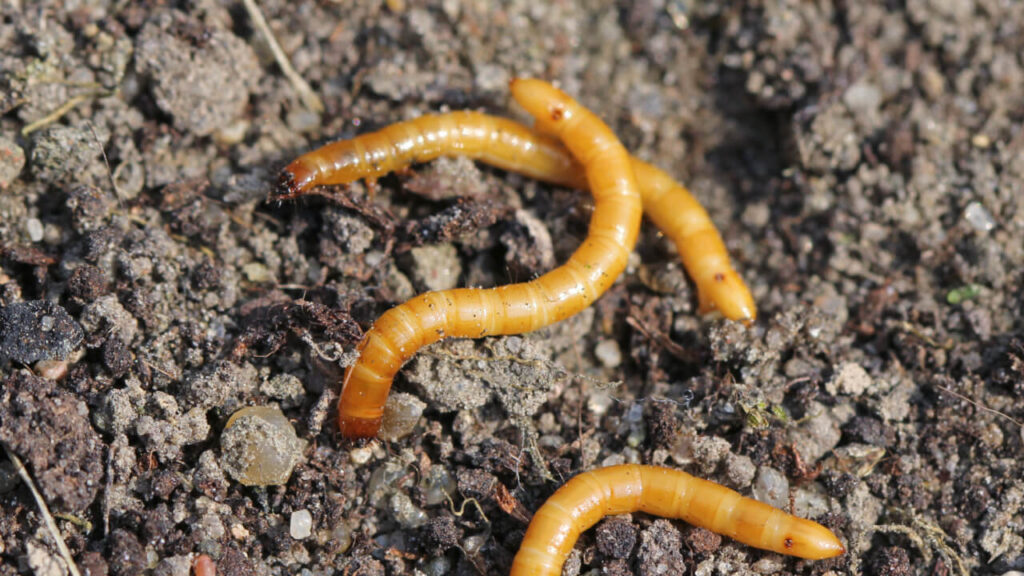
Wireworms are small, thin, and shiny worms that are most commonly found in the home gardens of North America. They appear bright yellow to reddish-brown and black with 0.25 to 0.5 inch long bodies. Wireworms have tiny, cylindrical, and jointed bodies with a wire-like appearance.
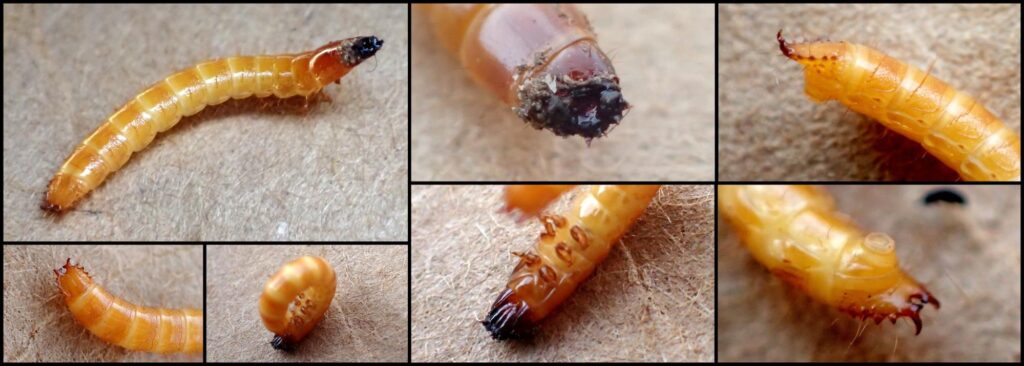
Many species of wireworms take four to six years to develop, and most of their lifetime spend in the larval stage. However, they may have all growth stages during the growing season. The wireworms overwinter in the depths of 24 inches when the soil temperatures reach around 10 C (50 F).
While the adults of wireworms which are click beetles, are hard-shelled, bullet-shaped, reddish-brown to black, and make a clicking sound when overturned.
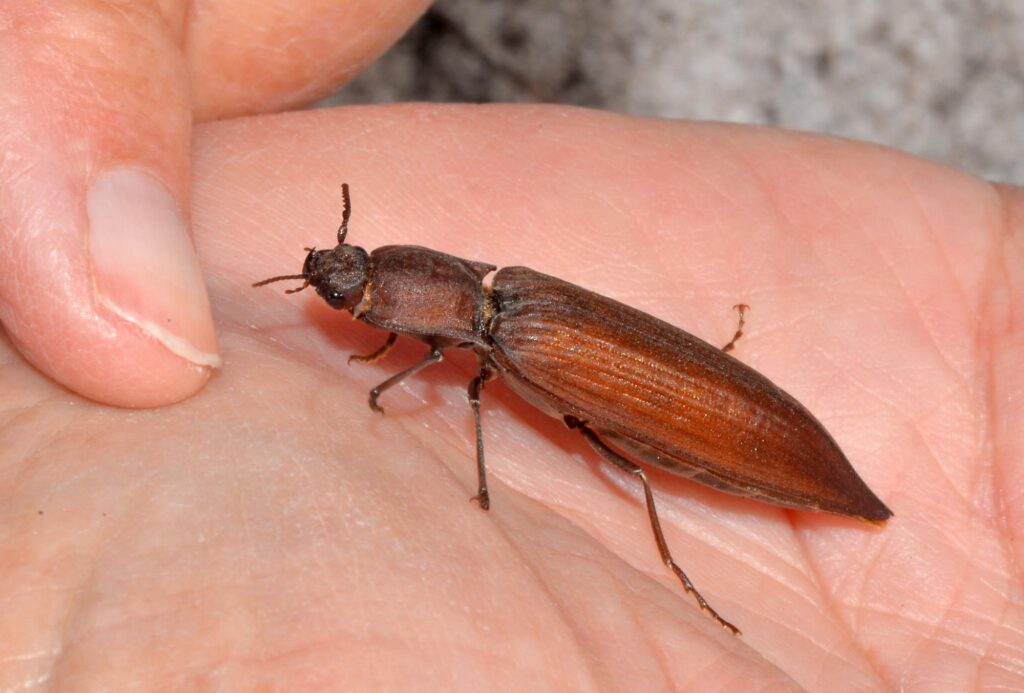
Wireworms Damage
Wireworms primarily damage the roots of young seedlings and prevent seed germination. They remain entirely underground and feed on young roots of seedlings attacking germinating seeds, tubers, bulbs, and carrots. These shiny worms eat the inside germ of grains and leave only the seed coat (which is not suitable for germination).

Wireworms have a more comprehensive host range from grass crops to vegetables. It includes cron grass, beans, beets, cabbage, carrots, lettuce, peas, onion, radishes, and potatoes. Moreover, wireworms also attack herbaceous plants.
Grass crops are more attractive sites for female click beetles because they prefer to lay eggs in these sites. Also, the wireworms cause more significant damage in old and poorly drained areas.
On the other hand, the adult click beetles do not cause any plant damage. However, the wireworm larvae are aggressive feeders of underground vegetables, stems, and roots. As a result, the damaged plants die and wilt.
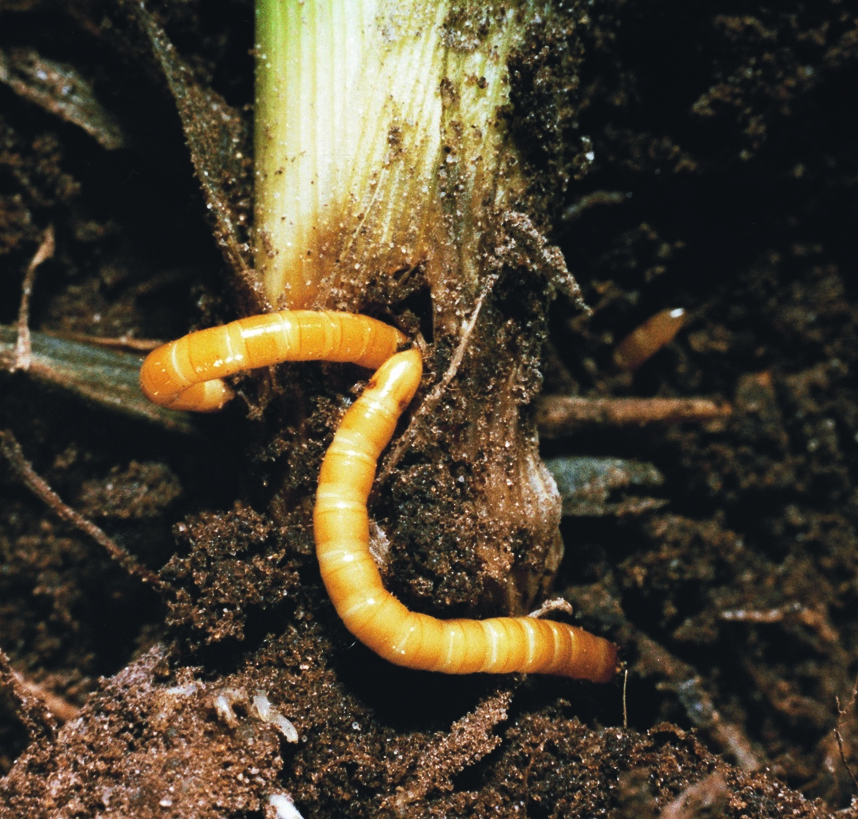
The damage to young plants or seedlings by wireworms is associated with small holes in the stem with less strength. The infestation and feeding of older plants by wireworms causes poor root growth with brown discolorations. The infected plants lack vigor and do not have stands.
Furthermore, the underground root damage leads to the wilting and stunted growth of the aboveground plant portion. Finally, the high wireworm populations in corn (untreated corn) and vegetable fields lead to severe damage and patchy crops in the garden. Reseeding is considered in the area to cover this damage by wireworms.
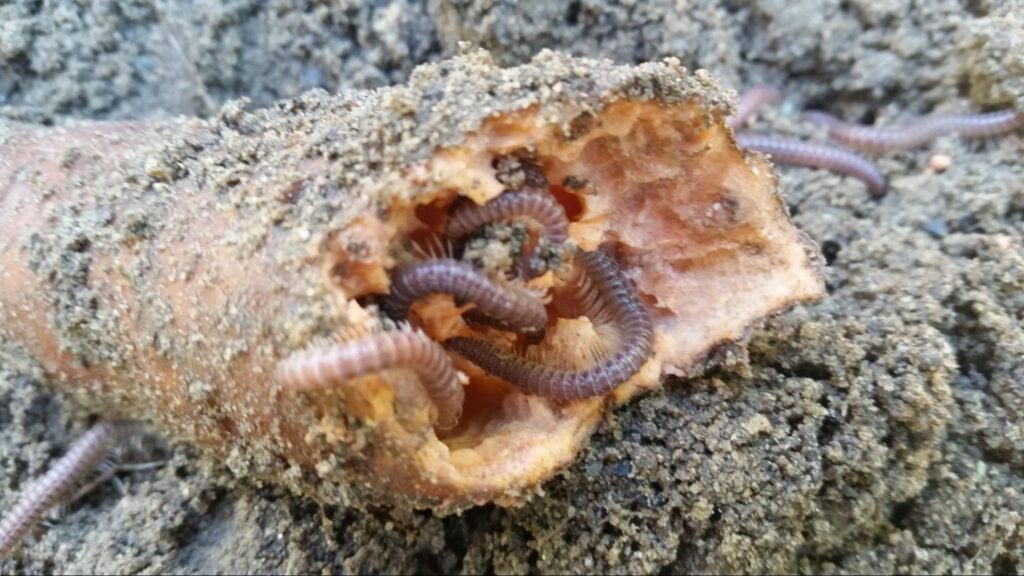
Note: In potato and sweet potato crops, the wireworms are more problematic because they dug burrows into tubers and make them unusable.
Life Cycle of Wireworms
Wireworms have an extended life cycle. They almost take up to one to six years to complete one generation cycle.
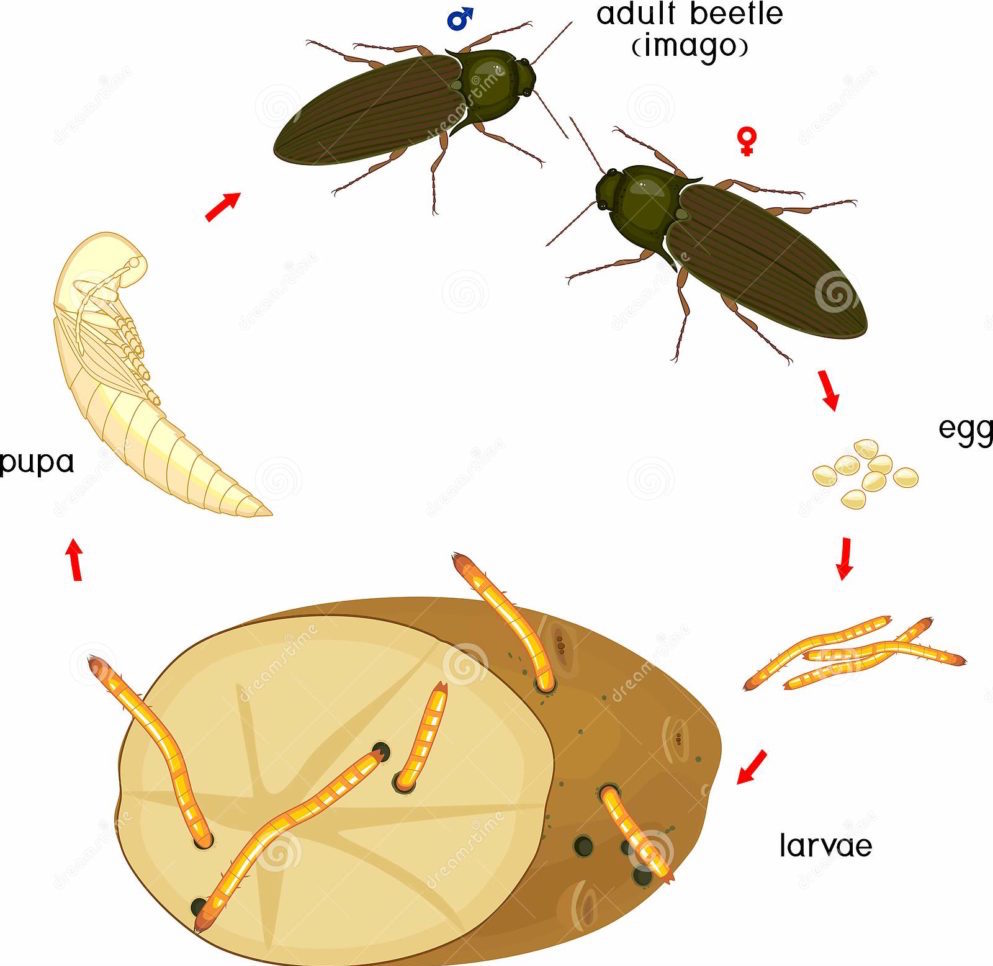
Wireworms and their adult(click beetles) overwinter in the soil. Then, in early spring, the female emerges from the ground, mate, and lay eggs. The female click beetles spend up to 12 months in soil and lay 100 eggs. Then, eggs hatch in days to weeks depending upon the soil temperature.
Right after hatching, larvae move over a short distance and start feeding on seeds and roots of young seedlings. The wireworm larvae remain in moist and cool soils, feeding on underground tubers, lettuce, and onions. During dry and warm weather, wireworms burrow deeper into the ground.
Many species of wireworms grow larger while feeding on seedlings and remain in the larval stage for almost six years and then pupate. After completing pupation in the soil, the adults emerge from the ground.
Note: Wireworm infestations in grasses and vegetable crops are essential because the wireworm population causes economic damage.
How to Get Rid of Wireworms More Efficiently?
Wireworm problems are more prevalent in old and poorly drained fields. In addition, the adult female click beetles are also attracted to these places for egg-laying.
The wireworm damage is more severe in grassland pastures. Similarly, some vegetables such as carrots, onions, potatoes, and lettuce also encourage wireworm damage. However, several management practices can be successfully employed in home gardens to prevent the crops from damaging wireworms.
And these are:
Crop Rotation
Crop rotation— this is good for organic vegetable gardens. It involves cultivating different types of crops in the same spot each year. It will also benefit the soil by adding nutrients and organic matter.
Therefore, always practice crop rotations with non-host crops such as tomatoes, cereal crops, and cabbage. These crops will reduce the wireworm infestations and populations. On the other hand, do not plan crop rotations with grasses, carrots, and potatoes because these crops are the prime target of wireworm feeding.
Use Bait Stations for Wireworms
Another chemical-free practice for managing wireworms involves the use of bait stations. For this purpose, many primary host plants of wireworms serve as a good trap, such as carrots, potatoes, and young seedlings.
To make bait stations, cut potatoes in two halves and burry 3 inches deep in the soil at 20 to 40 marked sites per acre. Pull the traps out from the ground every 2 to 3 days and discard wireworms.
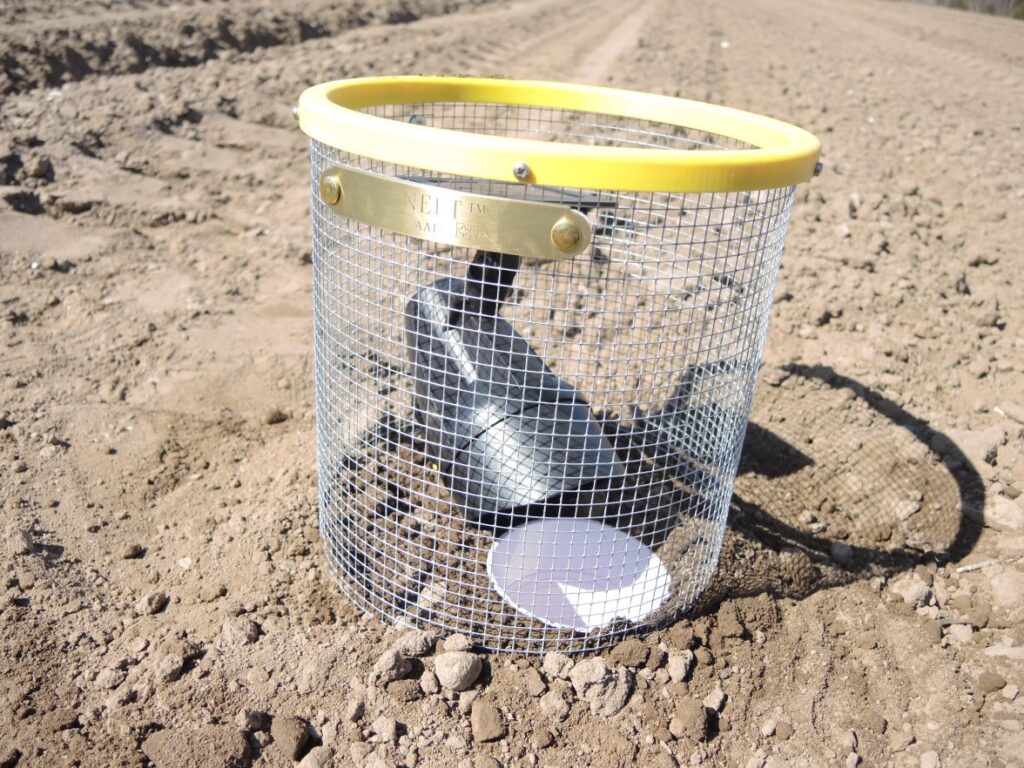
Another bait system for wireworms is corn and wheat seed. Place the corn and wheat seed in soft mesh pouches, bury deep (6-12 inches) in soil, and cover them with black plastic bags. Set these traps in the garden and fields before 2 weeks of planting. And retrieve wheat trap stations every 3 days and discard the wireworms.
Soil Sampling Before Planting
Before planting any vegetable and grass crops, soil sampling for the wireworm acts as the first line of defense and provides information about soil samples treatment threshold. For this purpose, take soil samples randomly in the field. The threshold numbers per soil sample should be 1 to 2 wireworms.
Use Beneficial Nematodes to Manage Wireworm Damage
Apply beneficial nematodes in gardens and crop fields before planting vegetables and corn crops. The nematode (Steinernema feltiae) actively hunts for wireworms and destroys them. The one pint of beneficial nematodes (which consists of 10 million active sites) treats up to 550 square feet of planting area.
Use Mulching for Wireworm Control
Cultivating the soil up to two to six inches will make it unfavorable for egg-laying click beetles. On the other hand, it will expose the underground larvae to the sun and their natural predators, such as birds. Birds feed on the wireworm as a protein source.
Later on, cover the soil with ground coffee or cover crops as organic mulch to prevent the runoff of nutrients and moisture.
FAQs
How Do You Get Rid of Wireworms Naturally?
The management of wireworms through insecticides is problematic and harmful for home gardens. So natural or organic methods are the best options to get rid of wireworms. These are crop rotations with non-host plants, bait systems (corn, potato, and carrots), and natural predators.
The bait stations with potato, carrot, and grains (corn and wheat) will reduce the wireworm populations. Similarly, crop rotations with onions and lettuce limit the food sources of the wireworm.
How Do I Get Rid of Wireworms in My Vegetable Garden?
The best way to eliminate wireworm feeding damage is luring their natural enemies in home gardens, such as birds. For this purpose, hang birdhouses and feeders near home gardens to encourage them.
Will Nematodes Kill Wireworms?
The beneficial nematodes are effective in the control of this wireworm. They voraciously hunt for them, penetrate and eat them out instantly.
Do Coffee Grounds Attract Worms?
Yes, composting worms love to eat coffee grounds. Therefore, adding coffee grounds in the composting bin will attract more worms and enhance composting.
Are Wireworms Mealworms?
No, wireworms are not mealworms. However, they show a remarkable resemblance to mealworms in terms of their appearance and mode of damage and have a wide host range, just like mealworms. But, the wireworms belong to the family Elateridae, and mealworms are members of the family Tenebrionidae.
Sources for Further Reading
- Marsden, C. (2022, May 22). Wireworms. Wisconsin Horticulture. Retrieved March 9, 2022, from https://hort.extension.wisc.edu/articles/wireworms/
- Planet Natural. (2019b, November 12). How to Identify and Get Rid of Wireworms. Retrieved March 9, 2022, from https://www.planetnatural.com/pest-problem-solver/garden-pests/wireworm-control/
- Ryczkowski, A. (2016, October 7). How to Get Rid of Wireworms in a Garden. Home Guides | SF Gate. Retrieved March 9, 2022, from https://homeguides.sfgate.com/rid-wireworms-garden-50748.html
Now that you know about wireworms, read our other articles about plant bugs:
Potato Bug 101: Potato bug bites! And everything else that you’d like to know!
How to Kill Whiteflies on Houseplants? Plus Organic & Inorganic Methods







